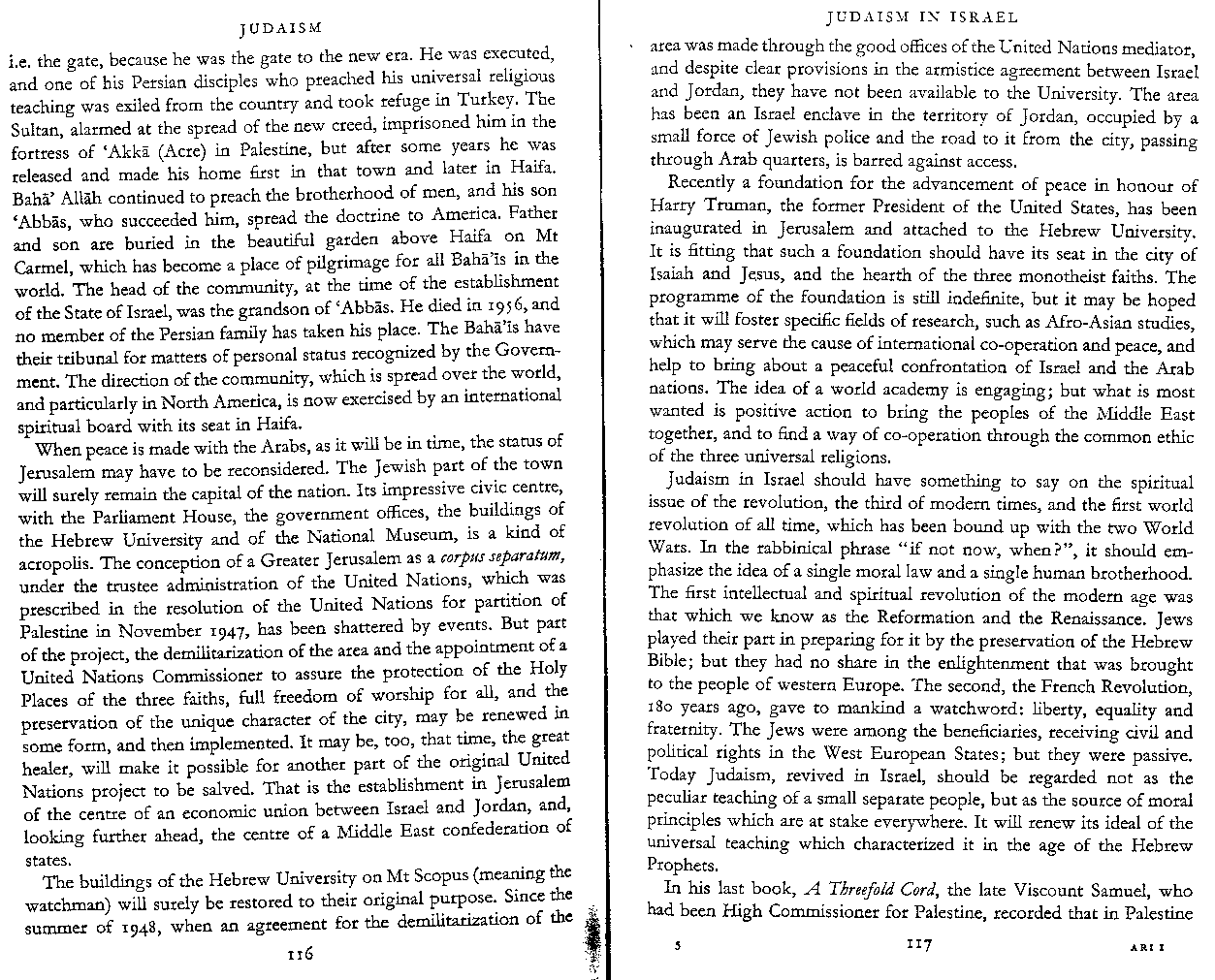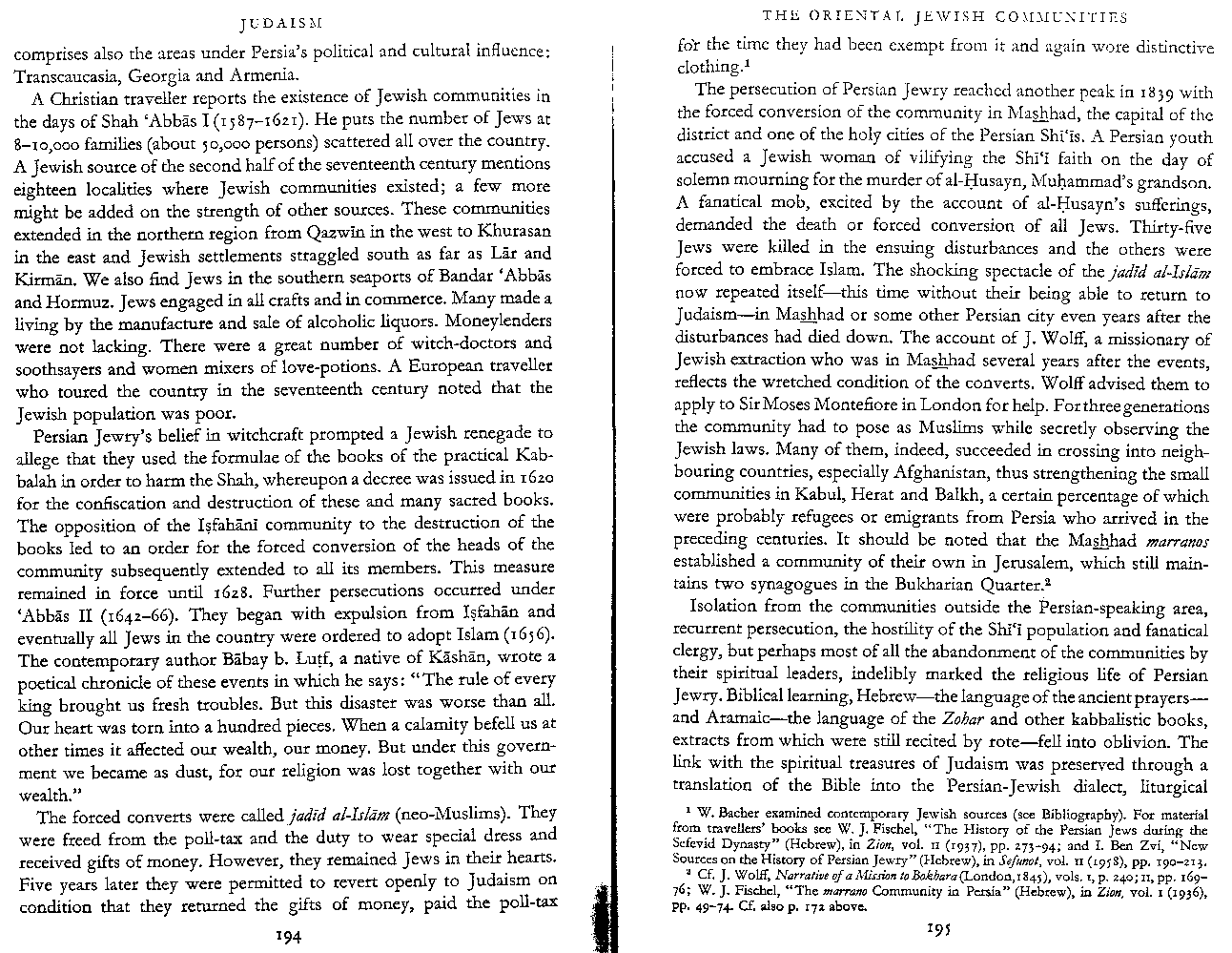1. Text
[page 115]
... Another peculiar religious minority with a secret creed and with a
community in Israel is the Druze population, whose main centre is in
Syria. The Israeli section is in the northern district and consists mainly
of peasants. They are sturdy and warlike, and in the War of Independence
they fought on the side of Israel; and they have thrown in their
lot with Israel. Though Arabic speaking, they were not on happy terms
with the Muslim Arabs and lived apart. In the Ottoman and mandate
periods they were not recognized as a community having jurisdiction in matters
of personal status. The Israel government has conferred
this right on them, and the elders form a tribunal. The Ministry issues
or them yet another bulletin in three languages about their affairs in
Israel, including reports of the judgments of the tribunal and most
of the articles are written by heads of the community.
A smaller sect of Persian origin, but having its religious and
spiritual centre in Palestine since the beginning of this century, is the
community of the Bahá'ís, or Babis. They were formed during the
nineteenth century in Persia where a religious reformer claimed to be
the forerunner of the Muslim Messiah, and assumed the title of Bab,
[page 116]
i.e. the gate, because he was the gate to the new era. He was executed,
and one of his Persian disciples who preached his universal religious
teaching was exiled from the country and took refuge in Turkey. The
Sultan, alarmed at the spread of the new creed, imprisoned him in the
fortress of 'Akka (Acre) in Palestine, but after some years he was
released and made his home first in that town and later in Haifa.
Bahá' Allah continued to preach the brotherhood of men, and his son
'Abbas, who succeeded him, spread the doctrine to America. Father
and son are buried in the beautiful garden above Haifa on Mt
Carmel, which has become a place of pilgrimage for all Bahá'ís in the
world. The head of the community, at the time of the establishment
of the State of Israel, was the grandson of 'Abbas. He died in 1956, and
no member of the Persian family has taken his place. The Bahá'ís have
their tribunal for matters of personal status recognized by the Government.
The direction of the community, which is spread over the world,
and particularly in North America, is now exercised by an international
spiritual board with its seat in Haifa. ...
[page 173]
... Another
effect of Sabbatianism may have been the success of the Bahá'í movement
with part of Persian Jewry who perhaps sought to escape persecution
by pretending to be members of the new Muslim sect. ...
[pages 195-196]
... The link with the spiritual treasures of Judaism was preserved through a
translation of the Bible into the Persian-Jewish dialect, liturgical
poetry (piyyátím), popular literature, and ritual observances. Conditions
thus created were favourable to the influence of various religious
trends, such as the Bahá'í Movement which won adherents among the
Jews, and to Jews joining Sufi orders. The author of this chapter met
in Tehran in I942 a Jew who was the murshid (leader) of a local Sufi sect.
...
2. Image scans (click image for full-size version)








|
